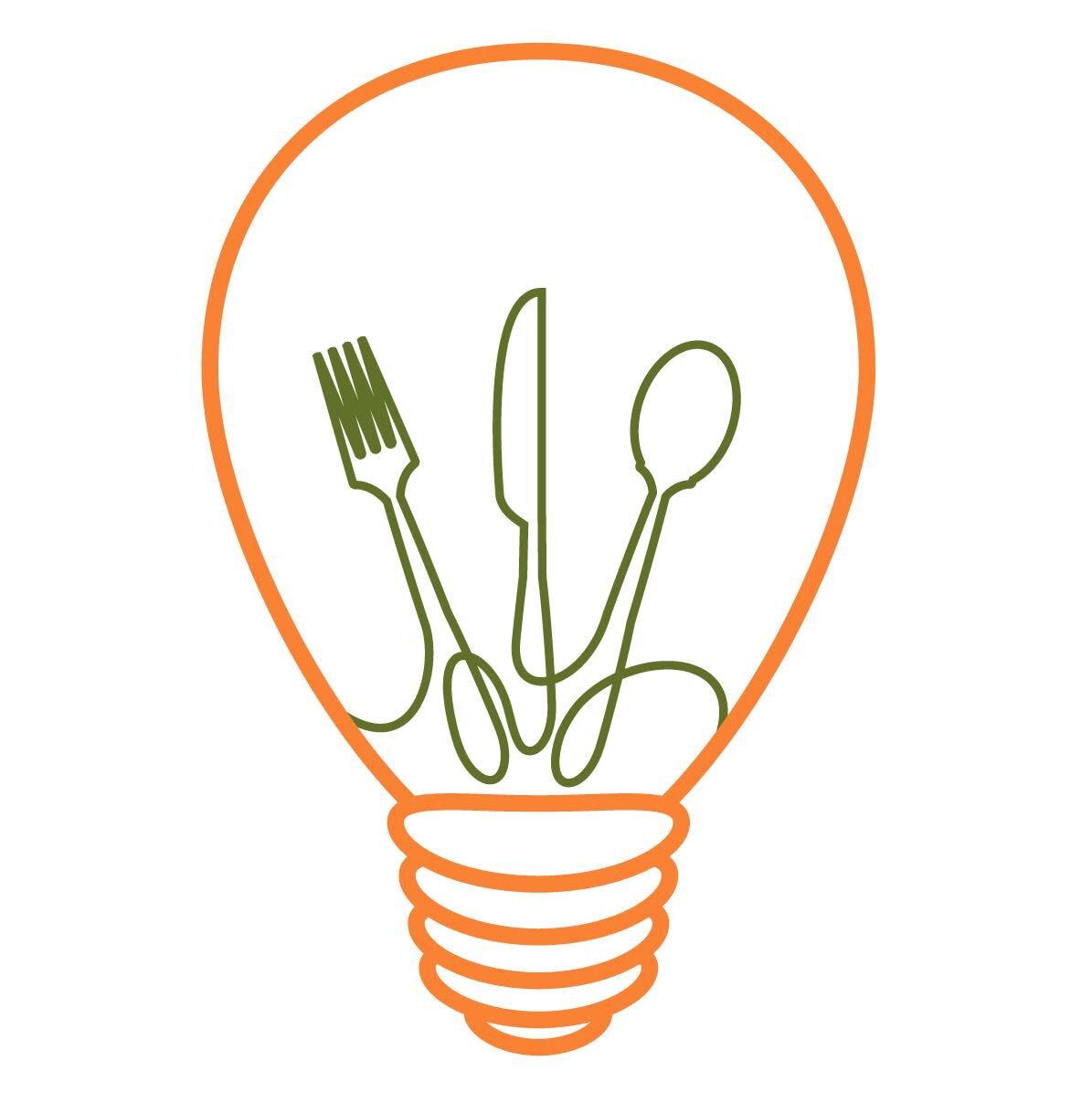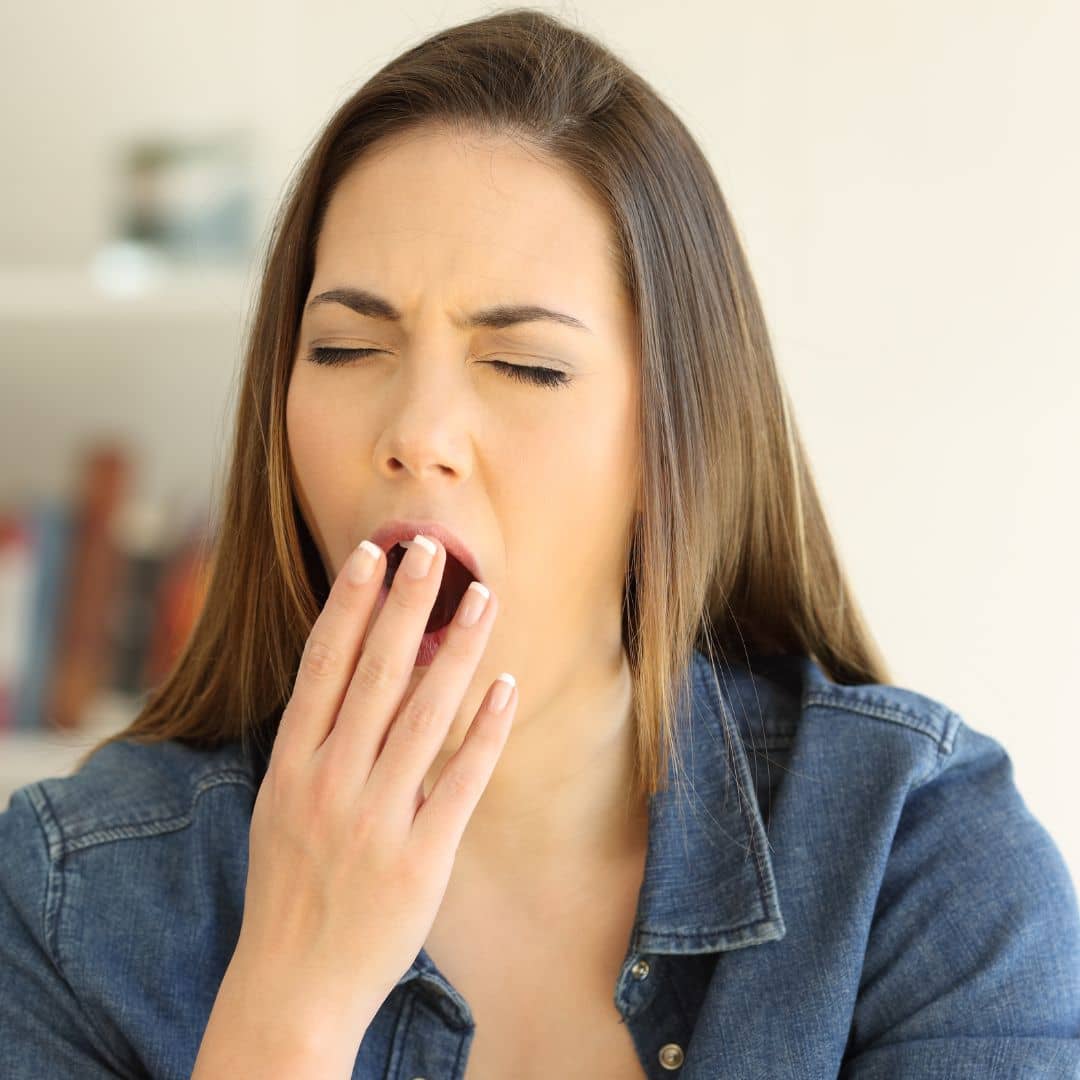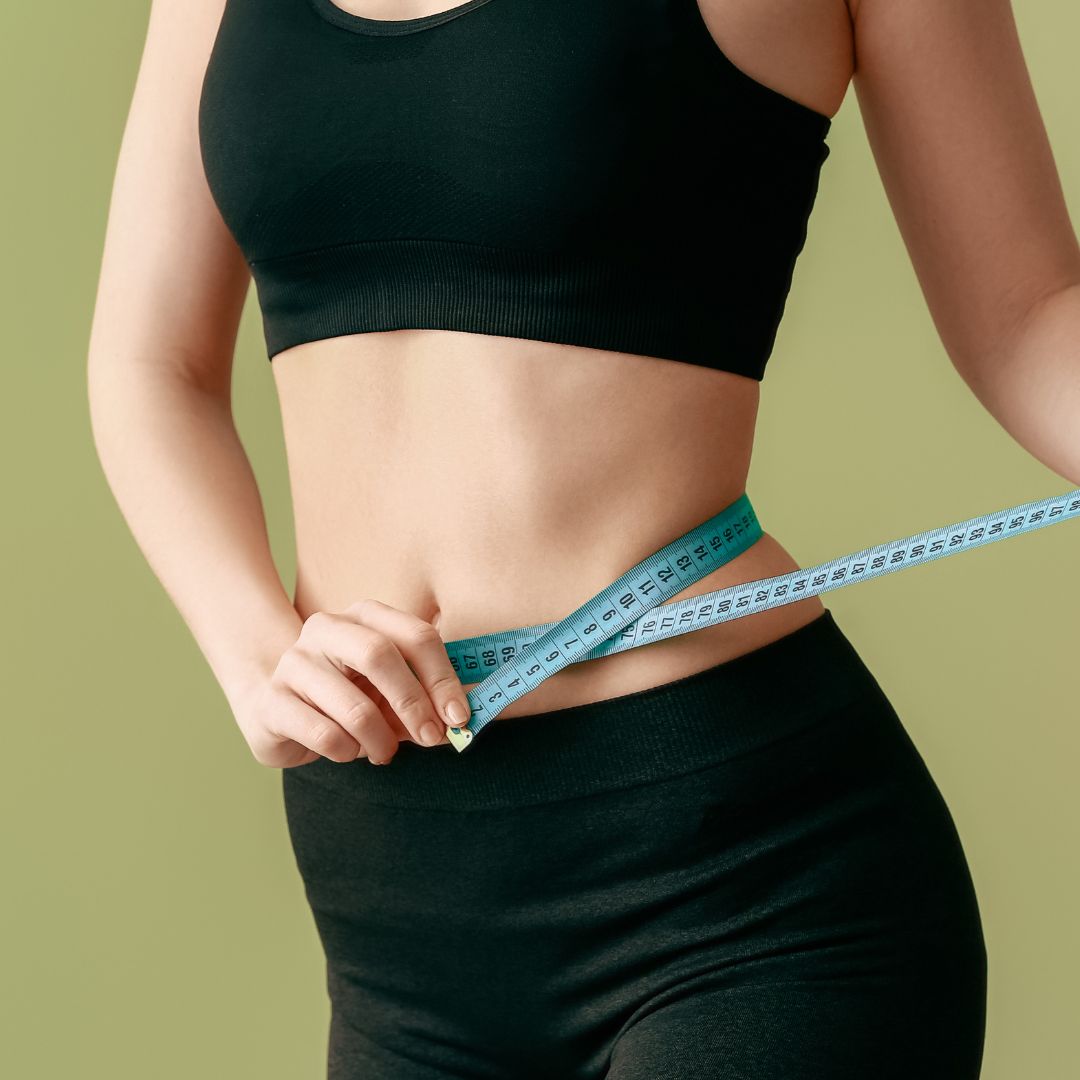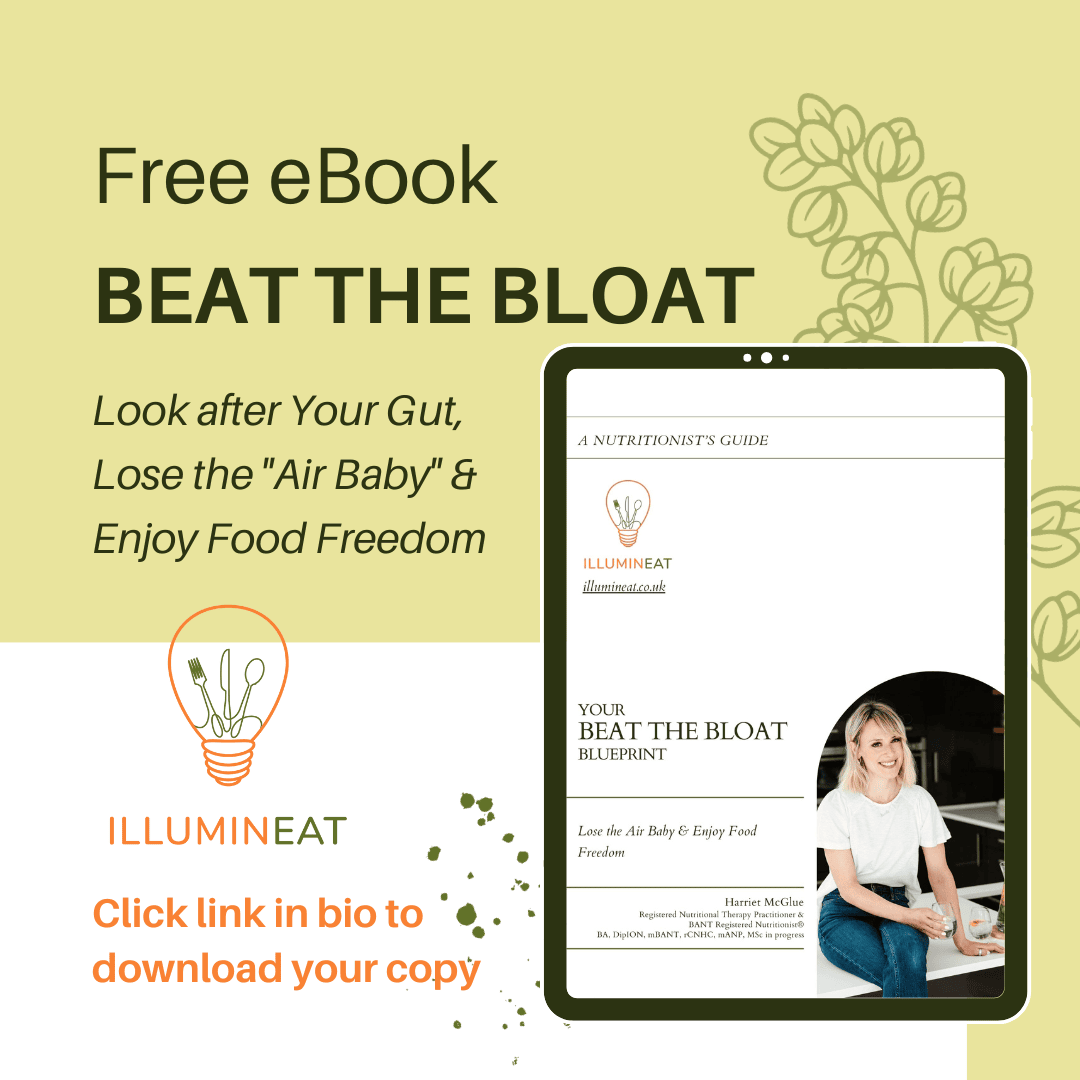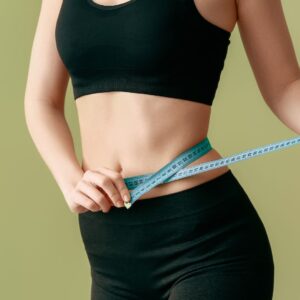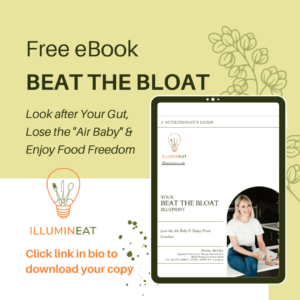It feeds out gut microbes (GM)
You can (and should) think of fibre as FOOD or FERTILISER for your GM. Unlike other carbohydrates (yes, FIBRE IS A CARB – who’d have thunk it?!), fibre isn’t digested in the small intestine because we humans lack the enzymes needed to digest it.
Instead, it cruises on down to the large intestine where – by some kind of natural miracle – our lovely gut bugs CAN break it down, by fermentation. So they get to feast (as long as we’re giving them enough!), grow stronger & we benefit too, because they produce a ton of SUPER BENEFICIAL COMPOUNDS – called short-chain fatty acids (SCFAs) – in the process. Symbiosis at its best!
Now, SOME fibres are also PREBIOTICS – a term you may have come across. This means they are EXTRA good at feeding the GMs (think rocket fuel!) I’ll look at those guys in another blog…
SCFAs
Our GM make 3 main types of SCFA: butyrate, propionate & acetate. And they’re BUSY little things! Their job spec includes:
- Supporting gut health by providing fuel for our endothelium (gut lining) & reducing leaky gut
- Lowering inflammation
- Supporting balanced blood sugar (glucose) & reducing appetite
- Promoting healthy immune function
- Helping to regulate/release certain hormones
- Acting on the brain, influencing mood & behaviour
- Promoting motility (getting things moving in the poop department!)
It makes pooping easier
It thickens and bulks out the contents of our intestine. BIGGER, BULKIER poops take less time to move through the intestine & are easier to pass (because noone wants to be constipated!)
It helps us manage our blood sugar
Our bodies handle fibre VERY differently from other carbs (sugars and staches). A lot of the fibre passes through intact, and it SLOWS THE ABSORPTION of sugars & fats in our food, so eating fibre-rich foods REDUCES the likelihood of BLOOD SUGAR SPIKES & DIPS which can make us feel LOUSY, increase oxidative stress and inflammation AND increase our risk of chronic metabolic & other disease in the long-term.
It can lower cholesterol
In fact, fibre can PREVENT THE ABSORPTION of some fat and cholesterol all together by binding to it so it can be eliminated in our poop. This can help lower blood triglyceride (fat) and cholesterol levels.
It supports detoxification
Our bodies are working 24/7 to excrete toxins (excess/spent hormones, alcohol, medications, environmental toxins from the food we eat & air we breathe etc). No fancy detox needed! The BEST WAY TO SUPPORT this in-built detox system is by eating a HIGH-FIBRE DIET. This is because fibre BINDS TO & allows us to promptly ELIMINATE (poop out) these waste products. Otherwise, toxins can be re-absorbed, re-circulated & concentrated – and that we do not want!
What foods contain fibre?
This one is easy – plants! Veggies, fruits, nuts, seeds, legumes & wholegrains. They all contain different types & blends of fibres (there are >100 types!) so eating a WIDE RANGE of foods from EVERY GROUP is best for our overall health. DIVERSITY IS KEY!
How much should I eat?
30g PER DAY for most adults. So what does this look like in practice? As a minimum, 5 portions of veggies, 2 of fruit, 1-2 portions of nuts/seeds/legumes in total and 3 of wholegrains.
A lot right?! Especially when we consider most UK adults aren’t getting anywhere close – latest figures suggest 18g is the average. And most of us only manage 2-3 portion of fruit & veg combined…
In fact, research suggests eating EVEN MORE(e.g. the SMILES trial used 50g) FURTHER REDUCES DISEASE RISK (type 2 diabetes, heart disease, depression etc.).
But before you get disheartened and turned off entirely, consider this:
A paper published in the Lancet looked at data from millions of people & found that eating just 8g more per day of fibre led to:
19% reduced risk of heart disease
15% reduced risk of type 2 diabetes
8% reduced risk of colon cancer
A couple of words of warning!
When it comes to fibre, START LOW and GO SLOW should be your motto.
Especially if you aren’t used to eating so many lovely plant foods, your GM will have an absolute field day! So if you don’t want to be uncomfortable, and in the immortal words of Pumba from the Lion King “clear the savannah after every meal”, then take my advice…
- Try adding 1 extra portion of high-fibre food a day – try this for a week. If you’re all good, add another portion in week 2 and so on. If you do have excess bloating or other symptoms, dial it down even further (try ½ portion) AND leave longer before you add more. This will apply to some people with IBS/sensitive tummies. Going slow gives your gut & your GM time to ADJUST & handle more healthy fibre over time.
2. Drink extra water too, to help flush everything through (a couple of glasses more than usual is plenty).
3. If you are constipated, see your doctor and sort this FIRST. Otherwise you may well feel WORSE
Want to learn more?
I highly recommend 3 peeps to follow on Instagram, or grab their books.
Will Bulsiewicz MD MSCI (theguthealthmd)
His book Fibre Fuelled is fabulous
Tim Spectre MD FRCP OBE (tim.spector)
All round microbe guru – check out his work with the company “Zoe”
Dr Megan Rossi (theguthealthdoctor)
Gut health researcher & nutritionist
